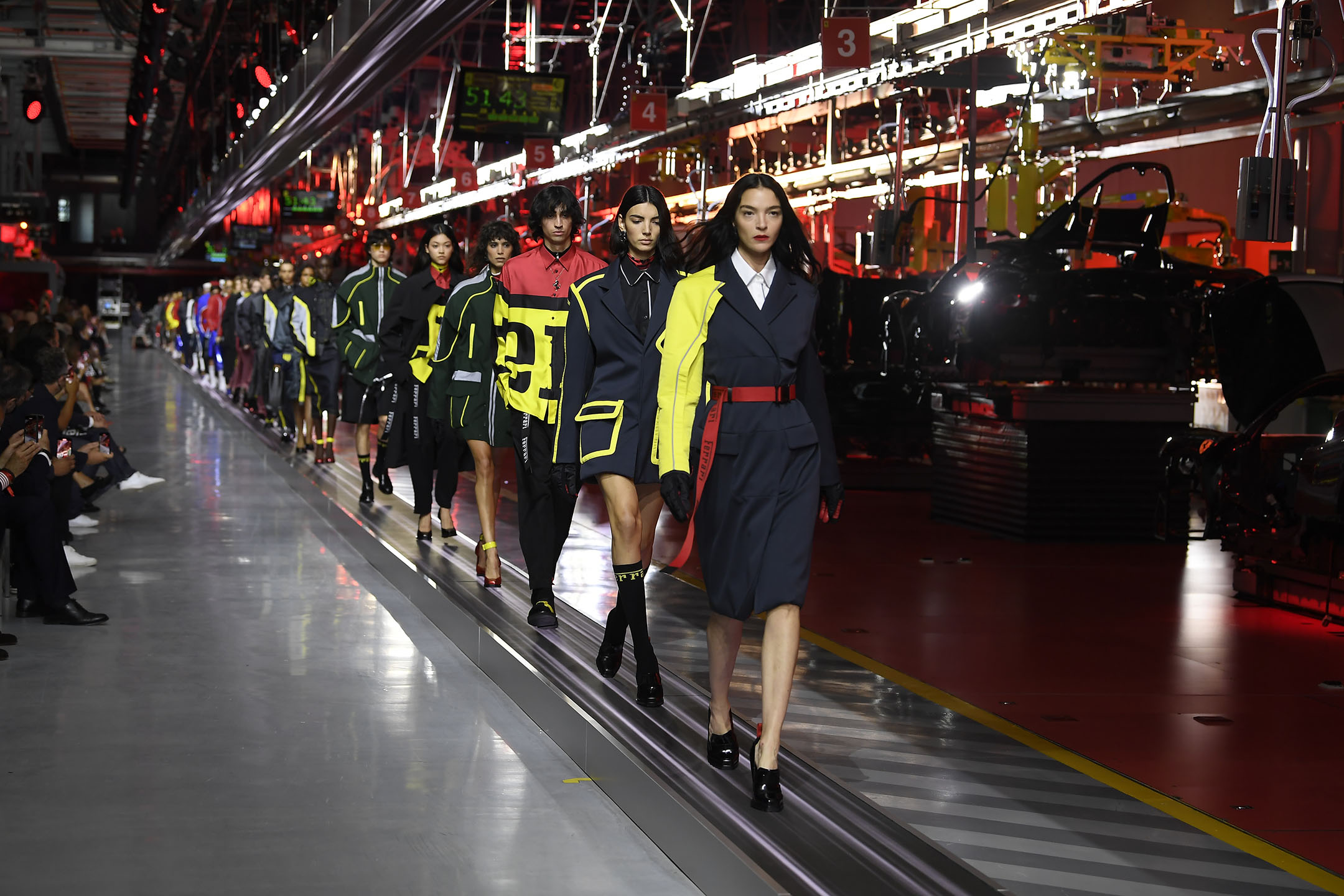
evo Australia, August 2021 (PDF)
After years of relying on the power of influencers and licencing deals, Ferrari is rethinking its place in the world of style.
Ferrari is one of the most recognisable brands in the world. In fact, it’s one of just 11 that is almost flawlessly rated when it comes to brand identity, desirability, loyalty and consumer sentiment – it’s up there with Google, Coca-Cola, Rolex, Apple and Hermès. As a luxury car brand only few can afford, it inspires a cultish devotion that its licencing department has been able to turn into a AU$5.4b business. From mugs to gaming headsets to drink bottles, hats, sunglasses, shampoo, watches, sneakers, luggage, and toys – you name it, Ferrari has probably put a logo on it.
Now, I understand the economic benefits of licencing, and, arguably, without this, Ferrari, wouldn’t be as globally recognisable as it is today. So, lots of these items I can forgive; there are some that I think are even quite cool, ironic even. But as a brand hailing from one of the most style-conscious nations in the world, the cheap, polyester fashion items that Ferrari puts its logo on are, to me, deplorable. Granted, in 2019, Ferrari did pull back its licencing deals for this reason, but as a luxury brand with that kind of power and desire behind it, it always bothered me how it was allowed to be diluted for so long – especially when it comes to fashion, the gateway drug into a brand’s world. Even if you can’t afford the car, clothing is the next best thing. It acts as a social signifier, it says, ‘my personal values and interests align with those of this brand.'
Other marques have already clocked the power of fashion: Mercedes-Benz has been a long-term naming sponsor of global fashion weeks and last year collaborated with Virgil Abloh, the creative director of Louis Vuitton menswear to unveil the Project Geländewagen G-class derived concept. Bugatti aligned itself with the most exclusive brand in fashion, Hermès, when it revealed a one-off Chiron featuring a cashmere interior, horseshoe grille and Hermès Craie paint. Tapping right into the highly lucrative streetwear market, BMW partnered with sneaker designer and founder of New York streetwear store Kith, Ronnie Fieg, to drop a range of clothing and accessories. BMW also rebuilt his 1989 E30 M3 and produced a limited edition M4 Competition x Design Study by Kith car, complete with Kith x M sport badges, of which 150 we made available. Finally, Lamborghini has also aimed for the hype beasts of streetwear by collaborating with Japanese designer Yohji Yamamoto and skate brand Supreme on two capsule collections last year. Since younger people around the world are facing more financial pressure and are less inclined to be able to afford to buy brand new high-performance cars, the older people who can, are driving them less. And don’t shoot the messenger here, but such is the way the industry has marketed itself, that without the aspiration of youth, car brands lose their cool factor, street cred and sex appeal.
Well, it seems John Elkann, C.E.O of Ferrari and of parent company, Exor (which also owns Stellantis) agrees. After ending more than half of Ferrari’s licensing deals, except for key partnerships such as Puma, Ray-Ban and Richard Mille; he’s hired ex-Armani, Dolce & Gabbana, and Pal Zileri designer Rocco Iannone to oversee the collaborations and head up Ferrari’s first full runway collection. It launched to critical acclaim and nowhere was there a polyester polo to be seen. Instead, the Maranello factory saw models of all genders stalk the production line wearing tailored overcoats, shirts printed with classic F1 cars, hyper-modern imaginations of the sport coat, Rosso Corsa puffa jackets and bold, graphic interpretations of the Ferrari logo and colour. It was cool. Very cool. And like nothing our industry has seen in a long time. “This is not a side project,” Elkann said at the show, perhaps throwing some shade to his competitor up the road. “That is important to understand.” He also said Ferrari was “trying to do better, and in a much more coherent way. We have legitimacy within representing a lifestyle, and an Italian lifestyle, to the world.” Perhaps I’m alone in this, but that is music to this aesthete’s ears.
There’s a bigger business story developing here too – Exor already bought a 24 percent stake in designer shoe brand Christian Louboutin and if reports are to be believed, Elkann is now throwing cash at Giorgio Armani, hoping to align Ferrari and Italy’s great maestro of tailoring. He isn’t doing this as a branding exercise to get Ferraris into more garages – he doesn’t need to – if rumours are to be believed, Elkann’s intention is use the prancing horse as cornerstone of a new Italian luxury empire. And when paired with the brand’s most recent (metal) models, this could be Ferrari’s most stylish comeback.
